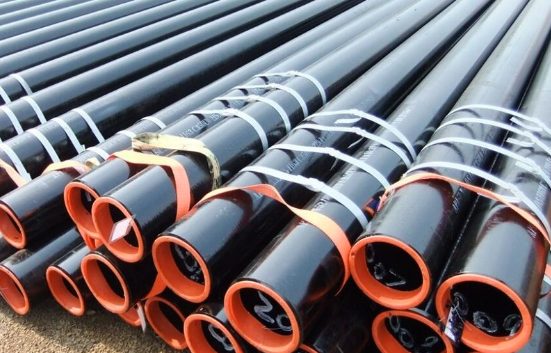Carbon steel pipes have long been a staple in various industrial sectors due to their durability, strength, and affordability. However, like any material, they come with their own set of disadvantages that users must consider. In this article, we'll delve into the drawbacks of carbon steel pipes to provide a comprehensive understanding for those in need.

- Corrosion Susceptibility: One of the most significant drawbacks of carbon steel pipes is their vulnerability to corrosion, especially in environments with high moisture or corrosive substances. Over time, exposure to elements such as water, oxygen, and chemicals can lead to rust formation, compromising the integrity of the pipe and potentially causing leaks or failures.
- Maintenance Requirements: Mitigating corrosion in carbon steel pipes often requires regular maintenance and protective measures such as coatings, linings, or cathodic protection systems. These additional steps can increase maintenance costs and downtime, particularly in industries where uninterrupted operation is crucial.
- Limited Resistance to High Temperatures and Pressure: While carbon steel pipes exhibit excellent strength at normal operating conditions, they have limitations in handling extreme temperatures and pressures. Elevated temperatures can lead to thermal expansion, weakening the material and potentially causing deformation or failure. Similarly, high-pressure environments can exacerbate the risk of structural integrity issues.
- Weight and Handling Challenges: Carbon steel pipes tend to be heavier compared to other materials such as stainless steel or plastic. This increased weight can pose challenges during transportation, handling, and installation, requiring additional equipment and labor. Moreover, the weight of carbon steel pipes can contribute to higher shipping costs, especially for large-scale projects.
- Environmental Impact: The production of carbon steel pipes involves the extraction of raw materials, energy-intensive manufacturing processes, and the generation of greenhouse gas emissions. Additionally, the disposal of old or decommissioned carbon steel pipes can pose environmental challenges, particularly if proper recycling or disposal methods are not followed.
- Potential for Contamination: In certain applications, carbon steel pipes may pose a risk of contamination due to the presence of impurities or surface treatments. This can be a concern in industries such as food processing or pharmaceuticals, where product purity is paramount. Proper cleaning and maintenance practices are essential to mitigate this risk.
- Galvanic Corrosion in Mixed Metal Systems: When carbon steel pipes come into contact with dissimilar metals in a mixed metal system, such as copper or aluminum, it can lead to galvanic corrosion. This electrochemical process occurs due to the difference in electrical potential between the metals, resulting in accelerated corrosion of the carbon steel component.
Despite these drawbacks, carbon steel pipes remain a popular choice in various industries due to their affordability, availability, and suitability for many applications. However, it's essential for users to carefully weigh the disadvantages against their specific requirements and environmental considerations to make informed decisions regarding material selection and maintenance practices. By understanding the limitations of carbon steel pipes, stakeholders can implement strategies to mitigate risks and optimize their performance in industrial settings.








